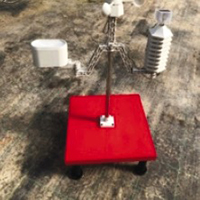Assessing sprinkler systems performance with a novel experimental benchmark

HTML: 93
All claims expressed in this article are solely those of the authors and do not necessarily represent those of their affiliated organizations, or those of the publisher, the editors and the reviewers. Any product that may be evaluated in this article or claim that may be made by its manufacturer is not guaranteed or endorsed by the publisher.
Authors
Sprinkler systems are one of the most popular methods of irrigation worldwide. One of their key parameters is the so-called level of uniformity, i.e. every portion of the soil should be irrigated with the same amount of water. Assessing the level of uniformity is crucial for optimal design of sprinkler systems. In this manuscript, a novel experimental benchmark is presented in order to test irrigation sprinklers, assess their performance, and define their acceptable working conditions. Different sprinklers have been tested, their water application depth curves have been determined, and their performance has been evaluated using a combination of metrics. Results show that the majority of sprinklers are characterized by very good performance in terms of operating pressures in the range 2.0-3.0 bar and tend to decrease their efficiency for operating pressures outside of that range.
How to Cite

This work is licensed under a Creative Commons Attribution-NonCommercial 4.0 International License.
PAGEPress has chosen to apply the Creative Commons Attribution NonCommercial 4.0 International License (CC BY-NC 4.0) to all manuscripts to be published.

 https://doi.org/10.4081/jae.2021.1172
https://doi.org/10.4081/jae.2021.1172



